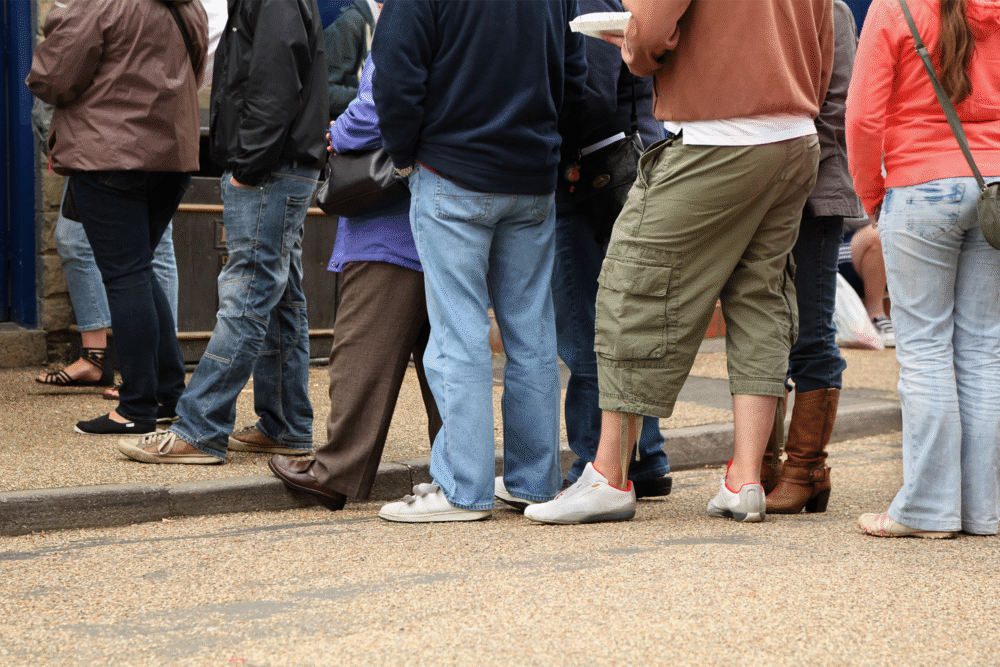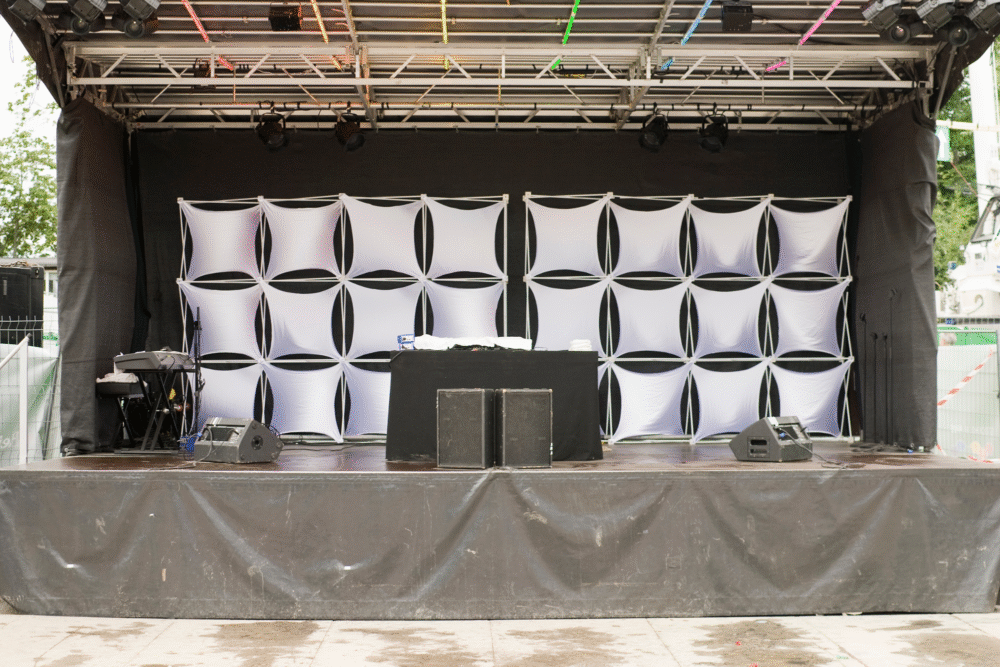When the music stopped, it wasn’t just the lights that went out.

For a minute, it felt like music festivals were going to replace religion. People planned their summers around them, saved for them, and found identity in the wristbands they wore long after the gates closed. But then things started to crack—the vibes shifted, the magic got monetized, and the burnout was real.
Behind every canceled lineup and “see you next year” that never came, there’s a story of good intentions drowned in greed, logistics, and a culture that evolved past the hype.
1. Lineups became a greatest hits reel nobody asked for.

When every festival starts booking the same top 10 acts, it stops feeling special. You can only see the same three headliners on rotation before it turns stale. Promoters stopped taking chances on emerging artists and leaned into crowd-pleasers with safe, algorithm-approved names. That predictability took the energy out of discovery.
Instead of bragging rights about finding the next big thing, festivalgoers started checking setlists like they were ordering off a tired menu. Once fans felt like they were paying for the same playlist in a different zip code, loyalty slipped. No risk meant no reward, and eventually, no audience.
2. VIP culture killed the community spirit.

Festivals used to feel democratic—everyone in the same dust and sweat, bonded by music and madness. Then came the velvet ropes, exclusive lounges, and $1,000 wristbands that turned general admission into the new nosebleeds. It stopped being communal and started being tiered.
Once the experience was stratified by bank account, the energy shifted. The communal roar of the crowd got drowned out by influencer content shoots and private bars. And the people who made the scene feel alive—the dancers, the wanderers, the lifers—got priced out or pushed back. The magic doesn’t live in a sponsored cabana.
3. Logistics started to feel like survival games.

When you’ve spent half your set waiting in a water line, dodging porta-potty chaos, or trying to find a signal just to meet your group, the music starts to feel like background noise. Festival organizers gambled on scale and skimped on infrastructure.
Crowd control got sloppy, amenities broke down, and safety plans felt like afterthoughts. The fantasy of escape started resembling a crowded airport on a holiday weekend—minus the air conditioning. And once you realize your $400 ticket doesn’t even guarantee a decent experience, staying home starts to sound a lot more appealing.
4. Nature had other plans—and festivals weren’t ready.

Rainouts are one thing. But wildfire smoke, flash floods, and heat domes? The climate crisis has made massive outdoor gatherings harder to pull off. Some festivals never adapted, pushing through risky weather or canceling last minute with vague PR statements.
Fans were left stranded, out cash, and more than a little jaded. Climate unpredictability made planning feel like roulette, and trust eroded fast. A weekend built around freedom and music shouldn’t end in emergency tents or evacuation orders. The planet doesn’t care about your favorite band’s set time.
5. Festivals forgot their local roots and sold out.

Once upon a time, festivals were born out of scenes—specific places, cultures, and sounds that gave them texture. But chasing scale meant abandoning that. Cities got bulldozed by tourism. Locals were displaced or ignored. And festivals morphed into generic brand showcases with little sense of place.
That loss of identity seeped into the vibe. What once felt homegrown became corporate. The weirdness got smoothed over. The food all tasted the same. The posters all looked alike. People came expecting magic but left with merch and blisters. A scene without roots is just an event with a bar tab.
6. Audiences grew up—and priorities shifted.

It’s hard to justify four days in a tent and a credit card bill that hurts when your back already does. The original festival faithful aged out. Newer generations didn’t inherit the same obsession. Why spend a weekend sweating through crowds when you can livestream the best sets and sleep in your own bed?
Experiences got redefined. People wanted intimacy, control, and comfort. Big doesn’t automatically mean better anymore. And the idea of a thousand strangers pressed against you while you try to catch a chorus now sounds more like a panic attack than a party.
7. The pandemic broke the rhythm and rewrote the rules.

When COVID hit, festivals stopped cold—and so did the culture around them. The collective pause gave people a new lens. Health risks became impossible to ignore. And once life resumed, fans came back changed. They wanted more intention, less chaos. More meaning, fewer wristbands.
Some festivals tried to recapture the old energy with business-as-usual reboots. Others limped along with reduced lineups and weird safety protocols. But many never found their footing again. Once the spell broke, it was hard to put the genie—and the glitter—back in the bottle.
8. Tech disrupted how we experience live music.

The barrier between stage and screen dissolved. Livestreams, virtual sets, and immersive digital concerts made access easier, cheaper, and cleaner. Why bake in a field when you can vibe in 4K at home? The FOMO engine sputtered.
YouTube replays, AR experiences, and curated digital stages offered more control and less effort. For younger fans, this wasn’t a compromise—it was an upgrade. Festivals couldn’t compete with the clarity, comfort, or instant replay. The fantasy of live became just another option on the menu—and it didn’t always win.
9. Safety became an unavoidable conversation.

Stampedes. Assaults. Drug overdoses. As festivals grew, so did the risks—and organizers weren’t always equipped to handle them. Crowds surged without proper barriers. Medical tents were understaffed. And for women, LGBTQ+ folks, and anyone marginalized, these events often felt more threatening than liberating.
Once safety became a headline instead of an afterthought, the narrative shifted. Fun couldn’t excuse negligence. A weekend of freedom shouldn’t come with that much risk. And when the cost of a ticket includes a sense of danger, people start asking tougher questions.
10. Overexposure made mystique impossible.

Part of what made festivals magical was how rare they felt. Now, there’s a new one every weekend—and most look identical. The market got saturated. The experience diluted. And the burnout was real. Even die-hard fans couldn’t keep up.
Festivals went from being something you waited for all year to something you skipped out of sheer exhaustion. There’s no scarcity. No urgency. No moment. Just another lineup drop and another deposit request. Nostalgia doesn’t work when the carousel never stops spinning.
11. The soul got lost somewhere between the merch tent and the hashtag.

In the end, what killed the greatest festivals wasn’t one single thing. It was death by a thousand sponsored cuts. Somewhere along the way, the community vibe turned into a marketing plan. The crowd became a demographic. The music became content.
And the thing that made festivals worth the dust, the heat, the chaos—that feeling of being part of something wild and real—just disappeared. People still want connection. Still want music. But they’re looking elsewhere now. Somewhere with less markup and more meaning.
